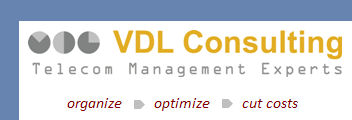Most companies are looking to cut costs these days. Telecom services are one area rife with savings opportunities. Stats show
the average company can reduce costs by 1% of revenue. But before you embark on a hunt for savings, consider whether you should DIY or hire a consultant (a TEM or Telecom Optimization consultant).
First, be realistic about whether you really have the time/resources. Steven Covey would define a TEM project as “important” but “not urgent”, so it will tend to take a back seat to anything remotely urgent. This has a cost - every month of delay is another month of over-payment.
Second, do you have the expertise to wring the maximum savings out of the effort? This is the tougher question because you don’t know what you don’t know. I would just say, keep in mind there’s a reason why a billion dollar TEM industry exists, i.e., it requires expertise.
These formulas will help you think through it and analyze the costs:
DIY Cost =+ Your Staff’s Hrs (time learning TEM, planning, executing)
+ Opportunity Cost (of delaying other projects in favor of TEM)
+ Un-captured Savings (due to lack of TEM expertise)
+ Cost of Delay (delayed start & longer duration will delay savings capture)
+ Financial Risk (potential for costs to exceed savings)
Consultant Cost =+ Your Staff’s Hrs (time supporting the consultant - a small fraction of DIY staff hrs)
+ Share of Savings (consultant contingency fee)
Note:
o No Opportunity Cost (other projects not impacted) o All savings opportunities will be captured o No Cost of Delay (shorter project duration yields savings sooner) o No Financial Risk (no fees unless there are savings) In short, telecom consultants have the time and expertise required while eliminating any financial downside. However, if you happen to have the expertise on staff and that person has the time, it may indeed make sense to DIY. The key, of course, is to be realistic when evaluating the various factors.
Note: Wondering about ROI? Assume savings of 10-30% of your total telecom spend, keeping it the same for both the DIY and the Consultant scenarios – the savings will likely be lower for DIY, but that difference is accounted for in the cost equation.
